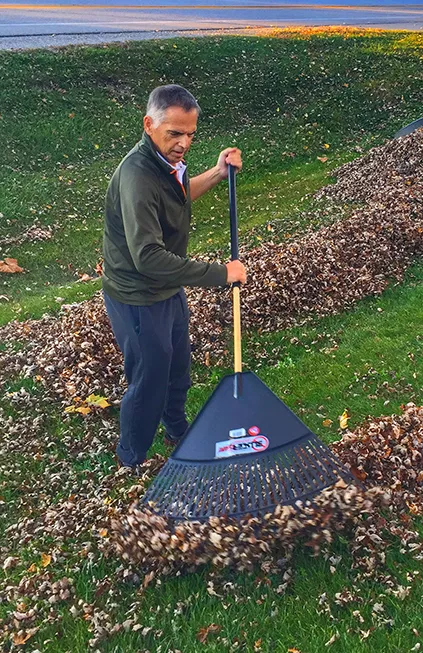Big improvements in hip replacement have made life better for a new type of patient

Hip replacement has come a long way. Today, the typical patient undergoing a hip replacement procedure is younger and more active than in the past because improvements in technology have made artificial joints more stable and durable.
Howard Dittrich came a long way as well. In 2016, degenerative arthritis was causing pain in his left hip.
“I had to do something about it because it was impeding my lifestyle so much,” he says. “I’m an avid golfer, and I just couldn’t do much of that anymore.”
In October, he traveled from his home in California to University of Iowa Hospitals & Clinics for a hip replacement.
Howard is a native of Amana, Iowa, who earned his bachelor’s degree and his MD at the UI. He’s a cardiologist who served for 25 years on the faculty of the medical school at the University of California, San Diego, and now specializes in helping to launch medical startup companies. He knows how to spot leaders in health care. He researched his options and chose UI Hospitals & Clinics over several providers in the San Diego area.
John Callaghan, MD, retired UI professor of orthopedics and rehabilitation, performed the procedure. Callaghan has devoted his career to finding better ways to replace joints, including research that has helped him invent some of the prosthetic devices that are on the market today.
He says two major “game-changing” advances have improved the technology.
“One is that the prosthesis is designed to grow into the bone instead of needing to be cemented in place,” Callaghan says. “It secures itself to the skeleton and then almost can’t loosen.”
The other is more durable plastics in the sockets of artificial joints.
“They’re at least 10 times as good as the old ones,” he says.
This has allowed younger, more active people to overcome hip problems in a way that wasn’t possible in the past.
“Thirty years ago, the average age of a patient was around 70,” Callaghan says. “Today, we operate on a lot of people under age 50. They go back to playing tennis and golf, back to construction work or farming. You can do all that on a hip replacement now.”
And far smaller incisions cause a lot less muscle damage, so patients leave the hospital sooner and get back on their feet.
In Howard’s case, within two weeks he was raking leaves outside his family’s home in Amana, where he recuperated. He’s glad he made the decision to travel so far for the best care.
“The team is so good,” Howard says. “You can see the look in their eye—it’s all second nature. There are no surprises. If you need a hip, go to Iowa.”